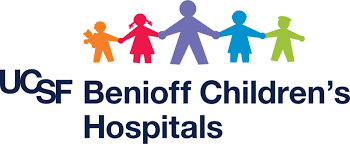What services does the Child and Adolescent Gender Center provide?
The Child and Adolescent Gender Center (CAGC), a collaboration between UCSF and community organizations, uses a multidisciplinary approach to offer comprehensive, gender affirming care to gender diverse/transgender youth and adolescents. Gender diverse/transgender youth and adolescents may feel a strong conflict between their gender (inner sense of who they are) and the physical sex characteristics they were born with. The CAGC team believes that being transgender is a normal variation in gender identity. In May 2013, the American Psychiatric Association replaced the term "gender identity disorder" with the term "gender dysphoria."
The UCSF CAGC Clinic is housed within the Division of Pediatric Endocrinology. Our clinic providers include pediatric endocrinology physicians and nurse practitioners, adolescent medicine physicians, pediatric psychologists, a psychiatry nurse practitioner, social workers, and administrative support staff.
Our overarching goal is to provide medical and psychological care, as well as advocacy and legal support to all our patients. We help children and familiesconnect to local resources and support groups, refer to counselors who are trained in the care of transgender youth, and provide legal and educational support. We support children and their families through their social, medical, and/or surgical transition. If and when children and their families are ready to pursue medical therapies, we prescribe and manage puberty blockers, menstrual suppression, and gender affirming sex hormones. Puberty blockers are a fully reversible treatment that are sometimes used to allow young people time to achieve greater self-awareness of their gender identification while putting a “pause” on their natal puberty and preventing the overt development of secondary sexual characteristics. We also participate in fertility counseling and refer to fertility preservation specialists if desired. Lastly, we are able to connect young adults, and occasionally older adolescents (16+) to gender-affirming surgeons.
The CAGC provides multi-disciplinary care at a number of locations, including San Francisco, Oakland, San Mateo, and San Ramon. Our current patient population includes children, adolescents, and young adults, from age 3-25. We see new and returning patients at all of our sites.
What additional support services are provided to the youth as well as the family?
We meet every patient and family where they are when they present to clinic. There is truly not a “one size fits all” approach, so we assess what each individual child and their family needs. Some examples of support services may include: gender exploration, safety planning, social transition, advocacy in the education system, legal support, name and gender marker change, family resources, connection to therapeutic relationships and fertility counseling. Our aim is to make sure that patients and their families have a full understanding of the services offered and their risks and benefits before moving forward. We continue to learn and grow with every experience and aim to expand our support services depending on the needs of our patients.
What can providers do to be inclusive of patients who are gender non-confirming/ transgender youth?
First and foremost, please treat transgender youth with the same openness and respect that you would treat any of your patients. Below are some tips on how providers can create an inclusive environment for our gender-expansive youth:
- Ask all your patients their preferred name, gender and pronouns at every encounter in a supportive way. Remember to always use the patient’s preferred name and pronouns in verbal and written communication. Use of incorrect pronouns or name can trigger feelings of dysphoria in transgender youth.
- Recognize that gender may be fluid and not always binary.
- Screen for patient safety in their home and school environments.
- Ensure all patients have access to safe and comfortable restroom when they present to your clinic, either single stall or gender neutral. Many clinics have simply replaced the existing door sign to read ‘all gender bathroom’.
- Make your clinic space inclusive of LGBTQ patients and families through signage and display of LGBTQ affirming symbols.
- It's ok if you make a mistake. If you do, acknowledge it, apologize, and keep moving forward.
- If you have any questions, do not hesitate to reach out to our team!
RESOURCES

